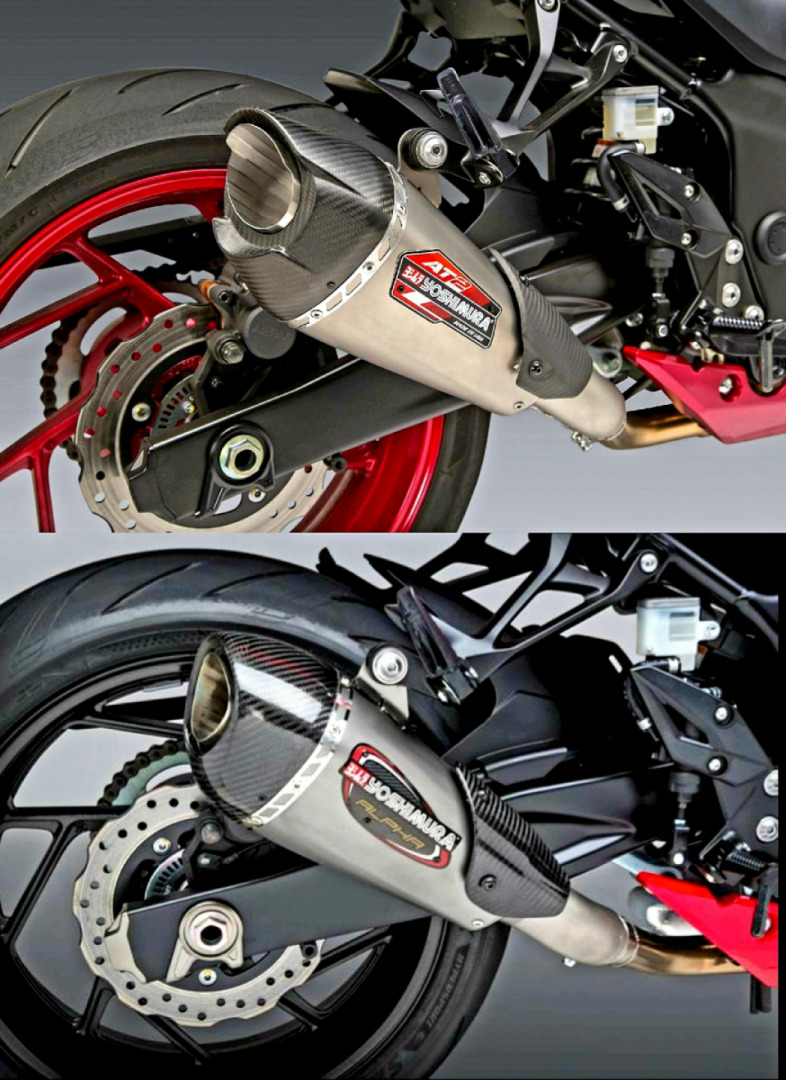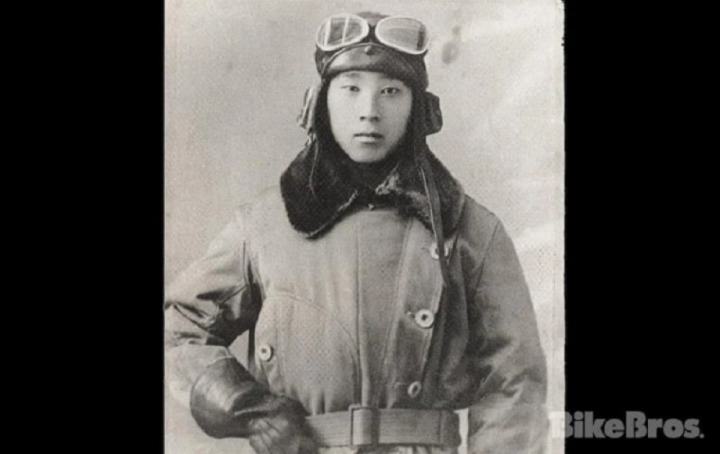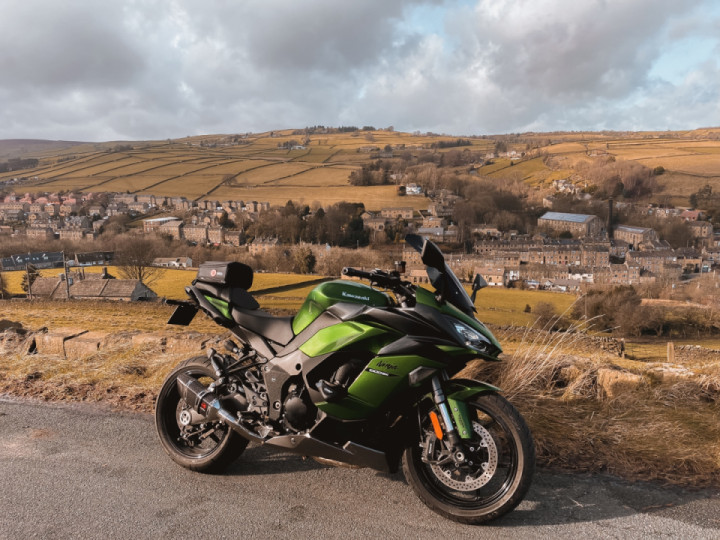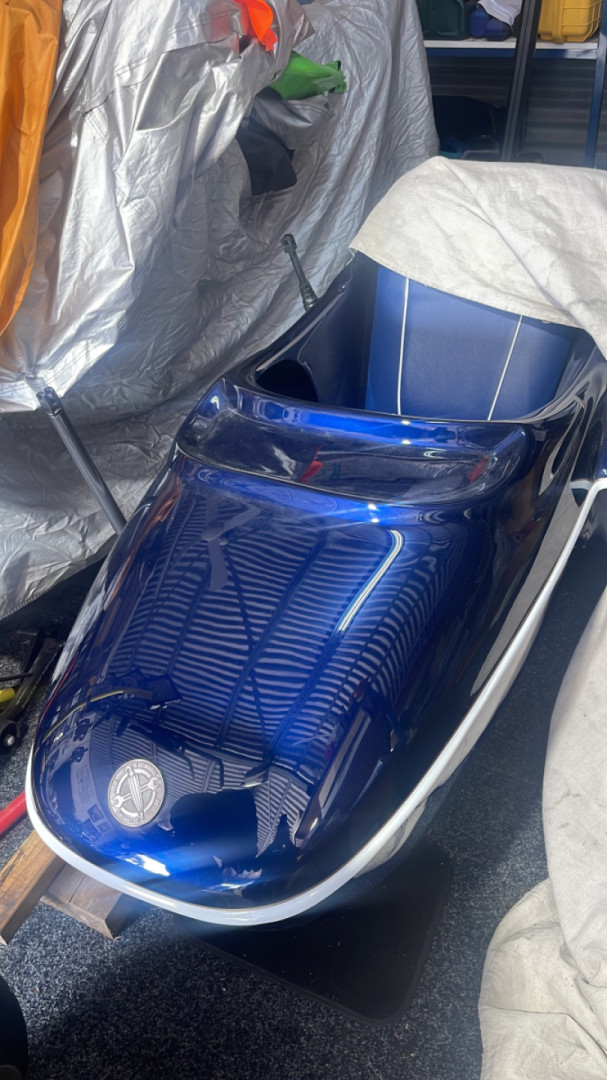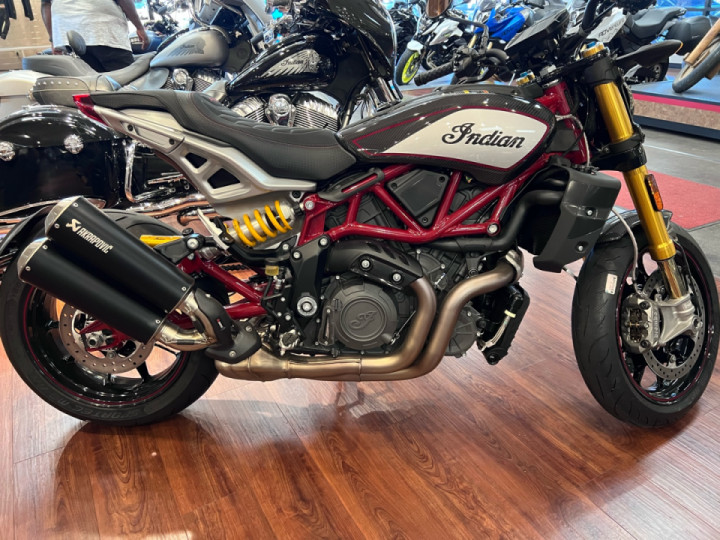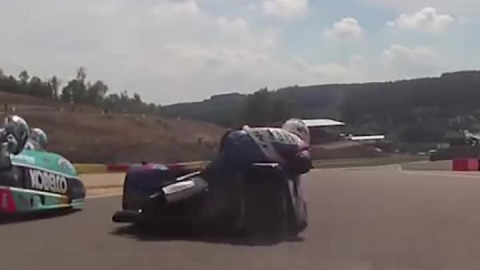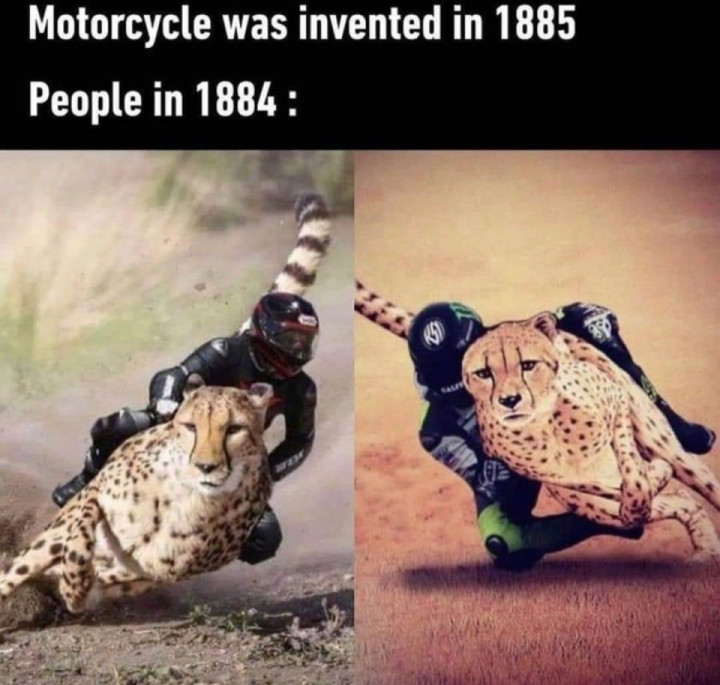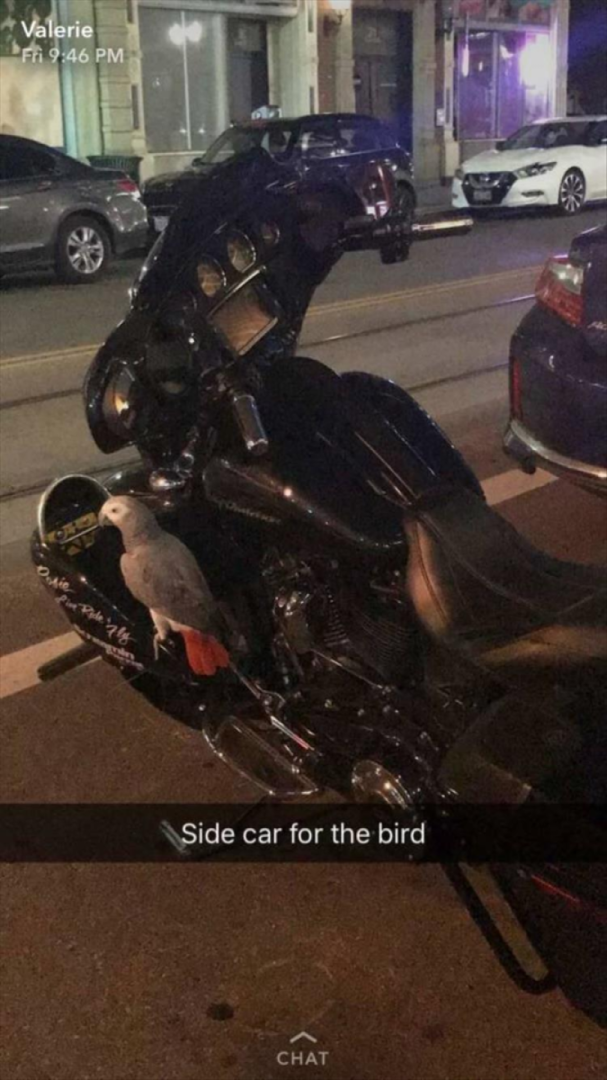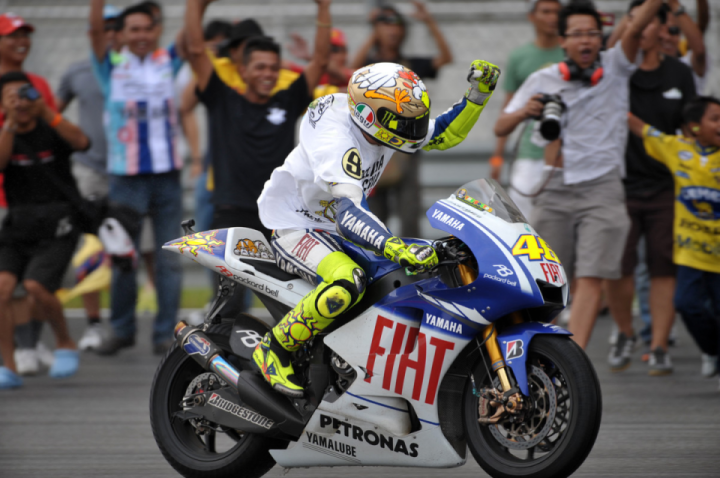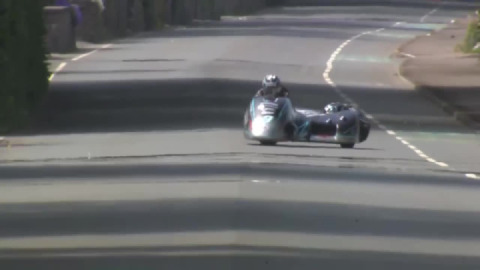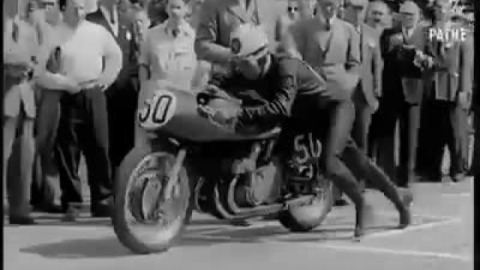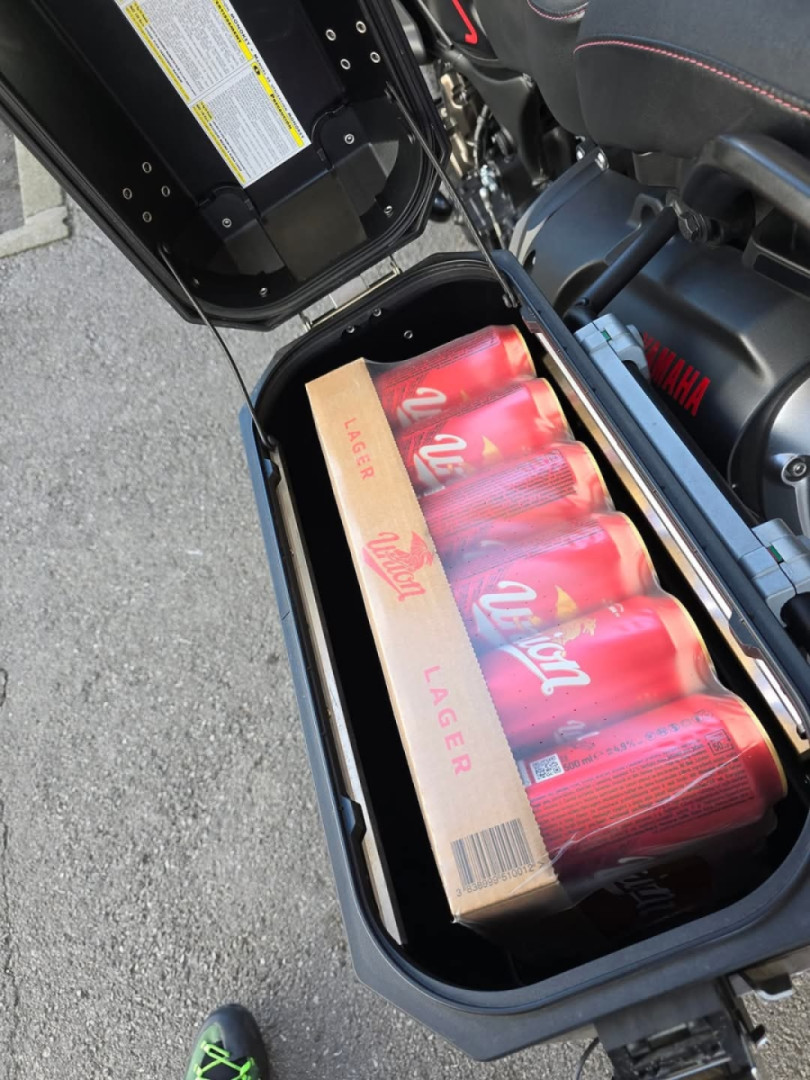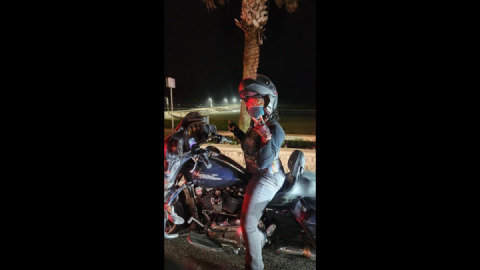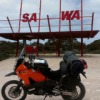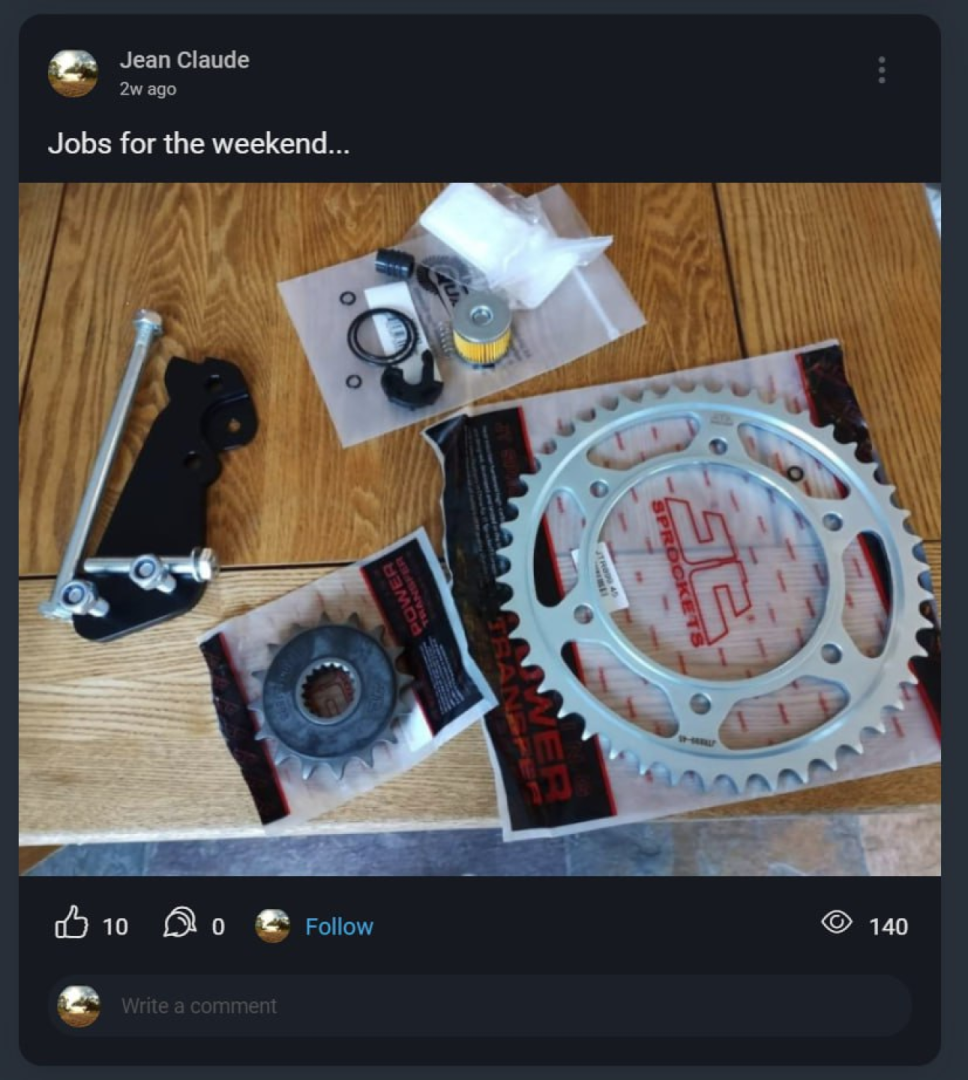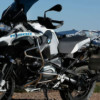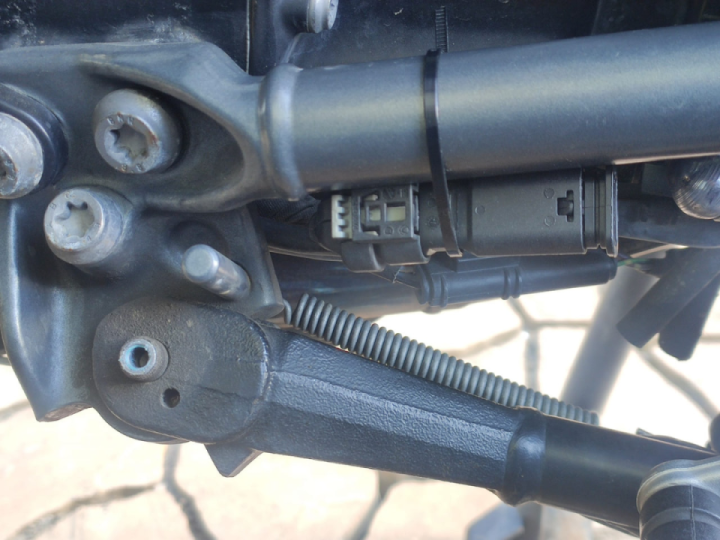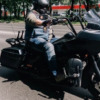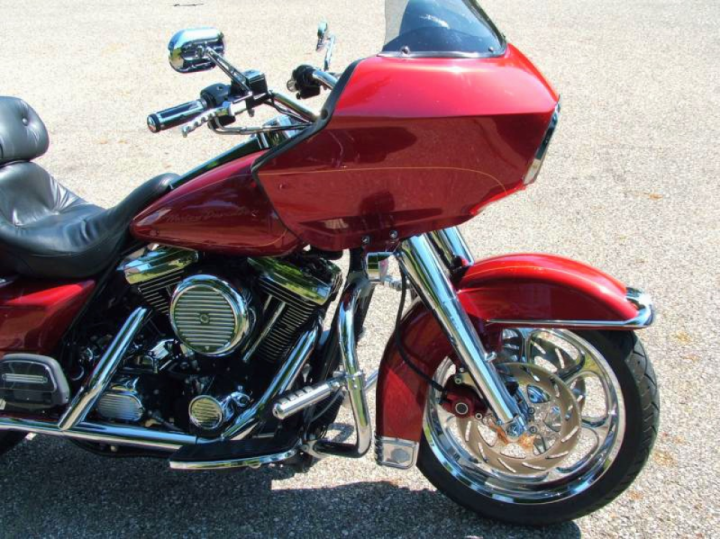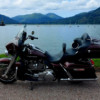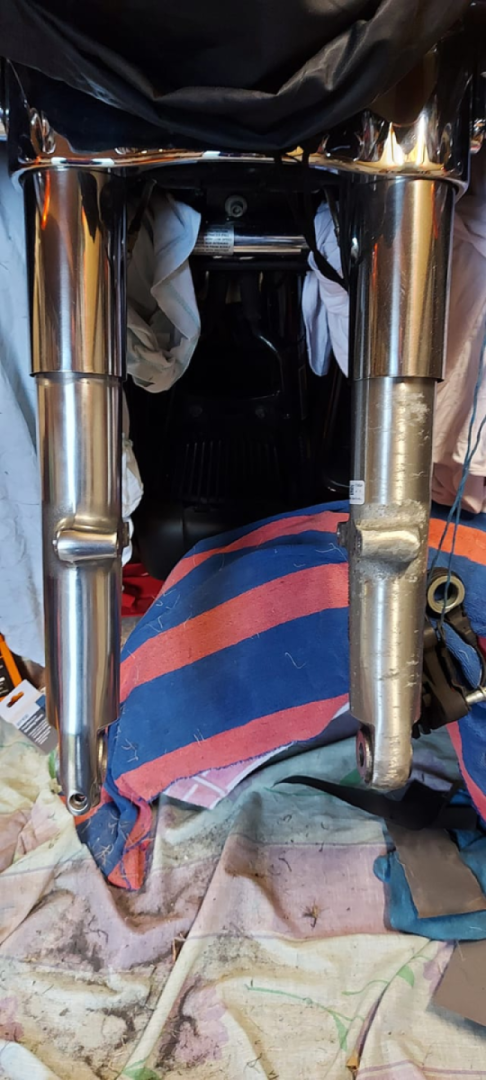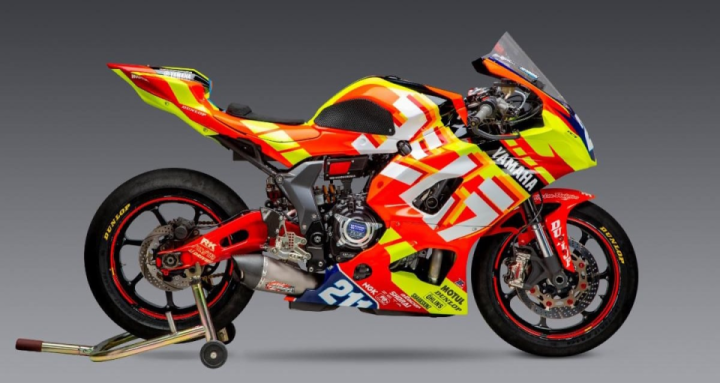Yoshimura History #02, 1950s-1960s The Other Side of the Fence.

As Japanese society healed from the devastating wounds of war, people started to ride motorcycles, initially for practical and commercial reasons, and then gradually also for pure enjoyment and excitement. In 1954, the same year as Yoshimura Motors was opened, and amid the afterglow of the previous year's Nagoya TT and the first Mount Fuji Climbing Race, Honda founder Soichiro Honda made the famous "Isle of Man TT Race Declaration."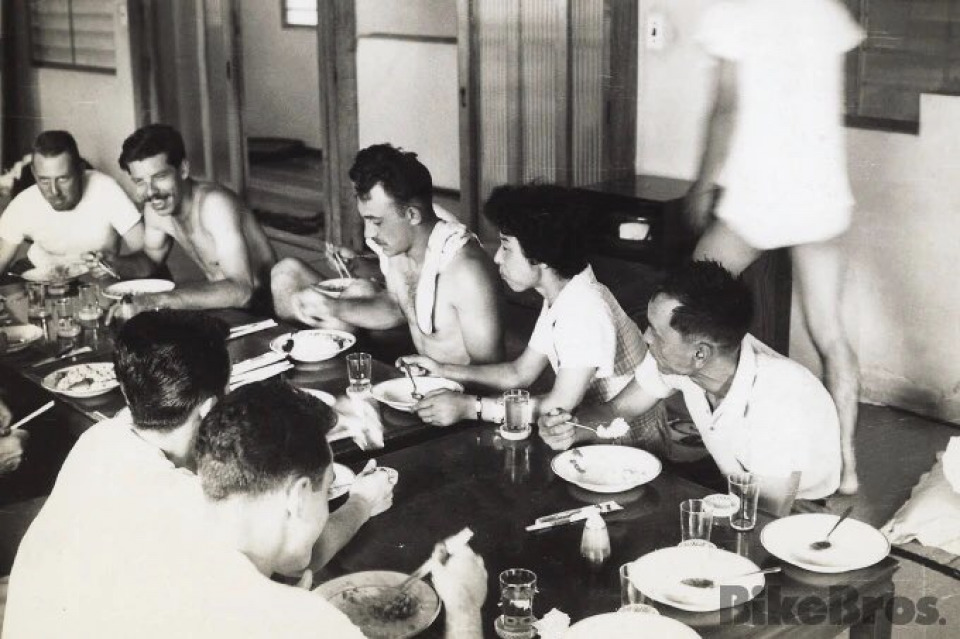
Yoshimura Motors was getting busy with American troops. Hideo invited troops to his house. They sometimes had meal together and went out for rides together.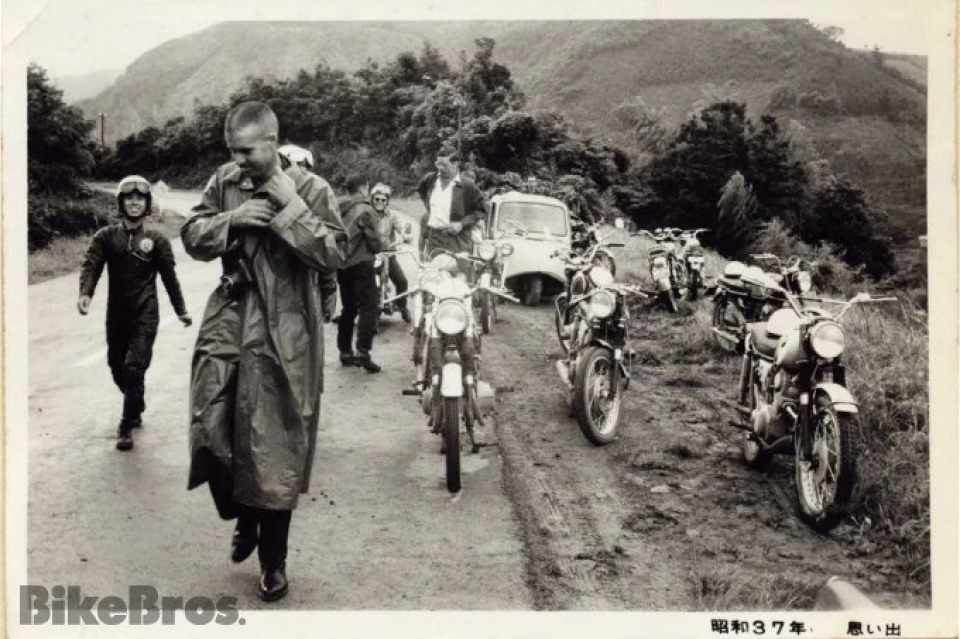
About a year after the shop opened, Hideo was invited by the troops to participate in drag racing at Itazuke Air Base. At the time, Kyushu Timing Association (KTA), a military motorcycle club at the base, was organizing one-on-one quarter mile races using an auxiliary airfield.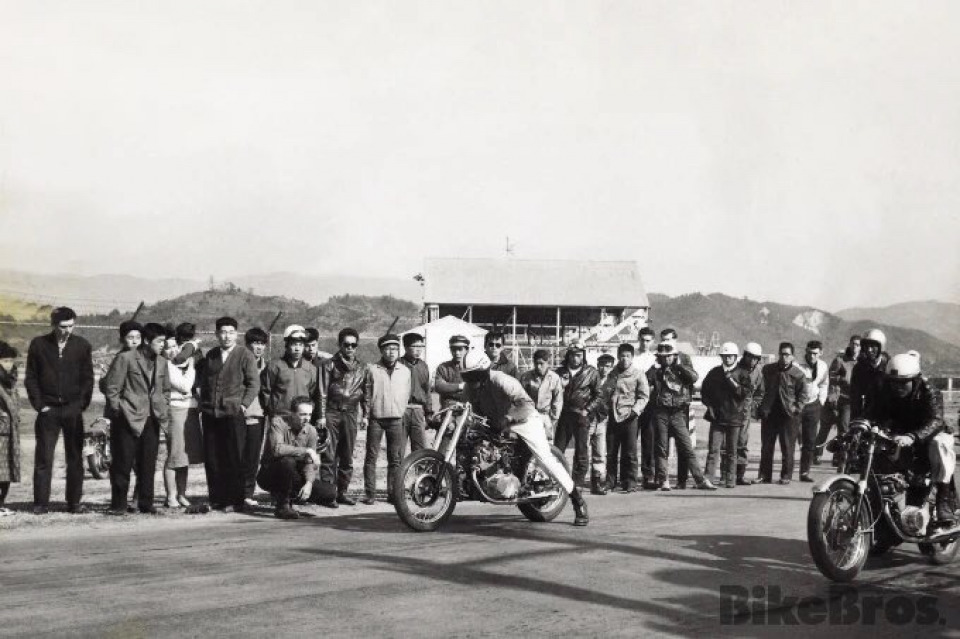
Hideo rode his Cabton 600 (a Japanese made OHV parallel twin) in the race, and although he did not win it, he was mesmerized by the feeling similar to that you get when you take off in an aircraft.
Japanese motorcycles then were subpar copies of British or German ones and somewhat fragile due to poor build quality, so after a while Hideo switched his bike to a much reliable BSA Golden Flash (a British made 650cc OHV parallel twin) and then modified it by shaving some weight and adding extra power. The Yoshimura-BSA 650 made him a frequent winner at the airfield.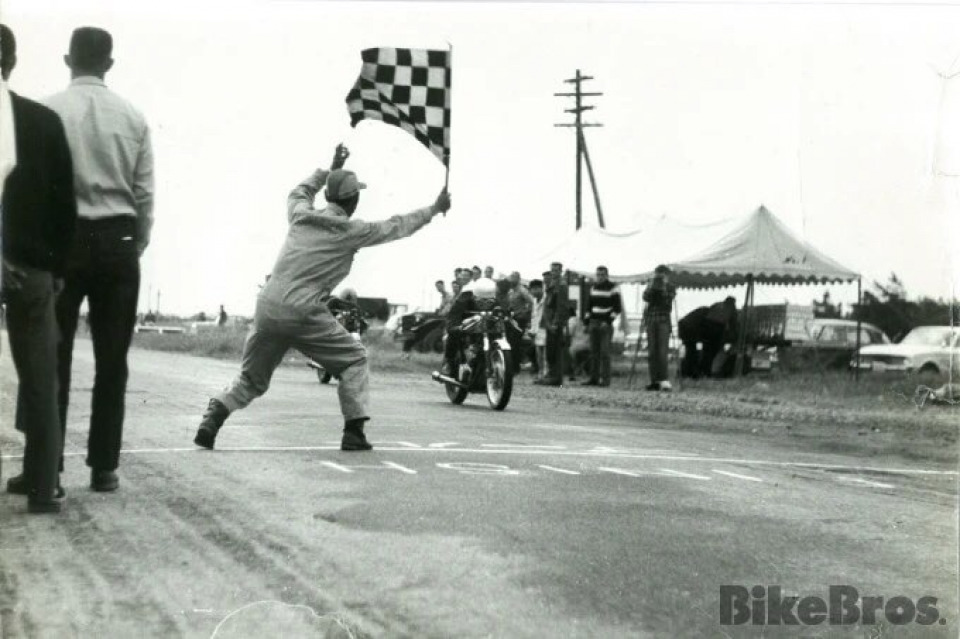
"Pop, you won again! Hey, can you hop up my bike?"
Hideo became known for his mechanical expertise and souping-up techniques. KTA members started to call him "Pop" ---- or "Pops" just like superbike champion Wes Cooley did later on ---- an affectionate way of addressing a man old enough to be their father.
His distinguished mechanical skills also allowed the Yoshimura Motors to become the Kyushu agent for Balcom Motors, the Japanese importer of prestige motorcycle brands such as BMW and BSA, in 1957.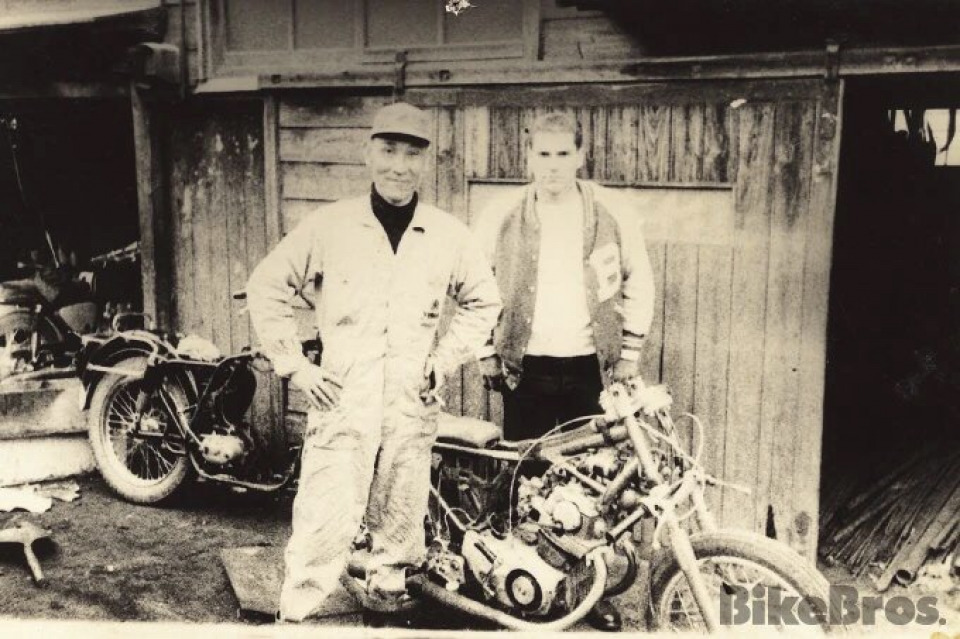
Hideo "Pop" Yoshimura discovered the fun of working on motorcycles. Inspired by various aftermarket parts and modification techniques found in American magazines ---- such as Hot Rod (founded in 1948) and Cycle (founded in 1950) that troops brought with them ---- but based on his experience as an ex-flight engineer and following his own inspirations, he began his search for better ways to improve engine performance.
One such approach was fabricating a high-lift camshaft, which is a proven method to optimize air flow efficiency by increasing valve-lift. With a suggestion from a Balcom Motors staff member, Hideo came up with an idea to reduce the base circle diameter of stock cam to make a high-lift cam.
It was the very first Yoshimura high cam, made by grinding down the base circle, while leaving the cam noses as they are. The smaller the base circle is, the longer the valve stem needs to be, so Hideo extended the stems by overlay welding, coated them with cyanide, heated them red hot with a welding torch (heat treatment), dunked them into an oil-bath and heated them again (quench and temper treatment) to make the extension as durable as the original.
Although cyanide is highly toxic and requires extremely careful handling, his eldest son Fujio was already helping with the shop when he was in junior high school.
Yoshimura Motors' racing development continued. Big valves made by modifying the valves came out of foreign cars, that are made of better-quality material than that of motorcycles of that period. Cylinder head porting to optimize intake and exhaust flow. Chopping, grinding and drilling lightening holes to reduce weight. One after another, and through the experience of drag racing with American troops, Hideo gradually laid the foundation of his craftsmanship as a professional 4-stroke engine tuner.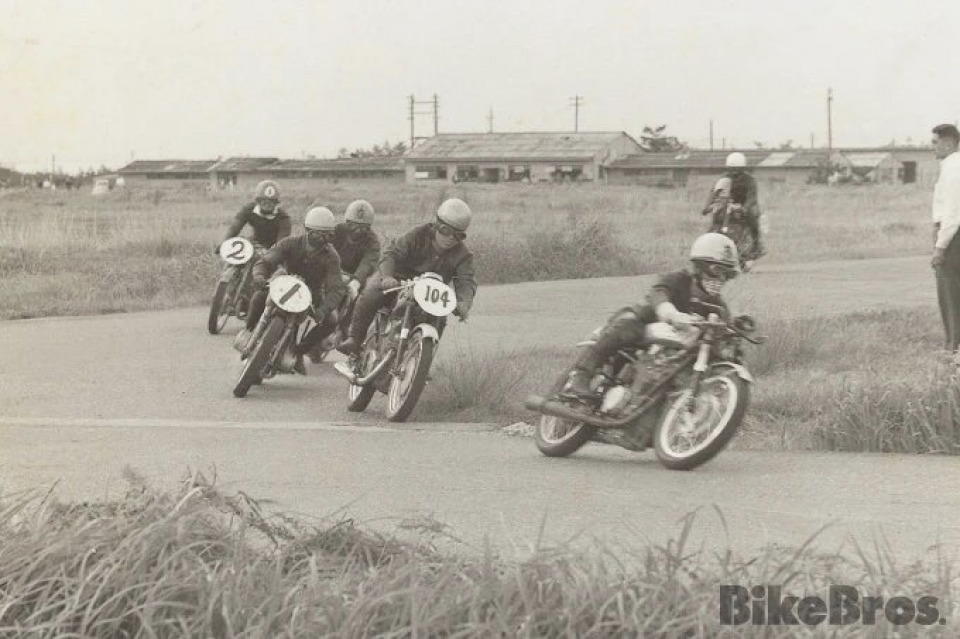
Hideo was the first Japanese to become a founding member of KTA, and because he was a key person in both motorcycle tuning and KTA's activities ---- mainly races and rides ---- he was practically running the organization as the number two man.
Meanwhile, troops' motorcycle accident rate was on the rise. Something had to be done, especially for young ones who were new to Japan and unfamiliar with left-hand traffic. The base commander at Itazuke asked Hideo to provide training for them. Hideo in turn suggested to make all Itazuke motorcycle operators to become KTA members, and he started a safety riding class once a month. Since then the accident rate dropped significantly.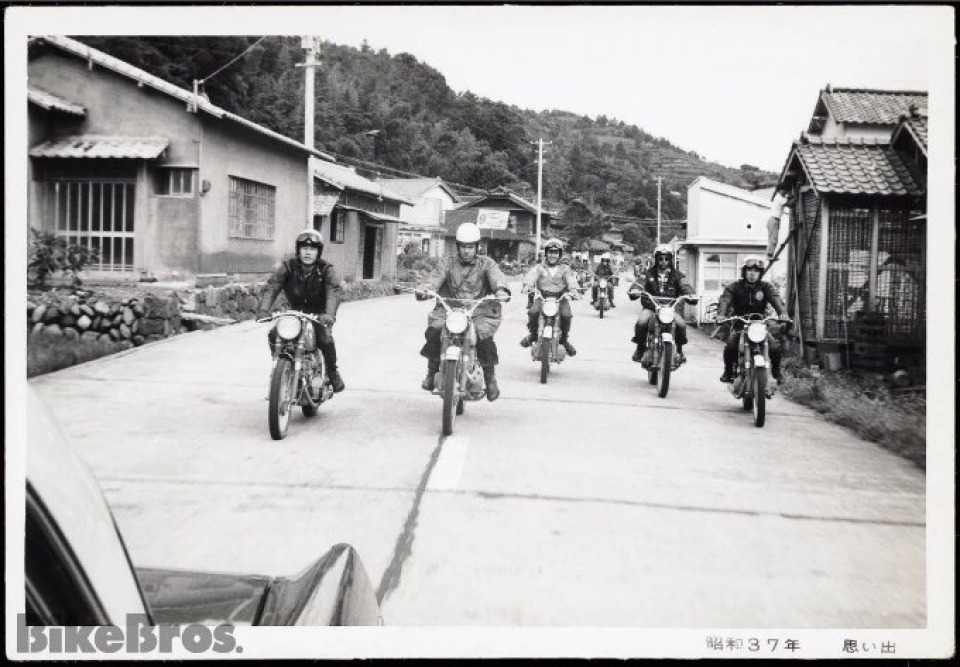
In addition to the racing events at Itazuke Air Base and Ashiya Air Base, KTA started to host road races at Gannosu (Brady Air Base, later renamed to Gannosu Air Station).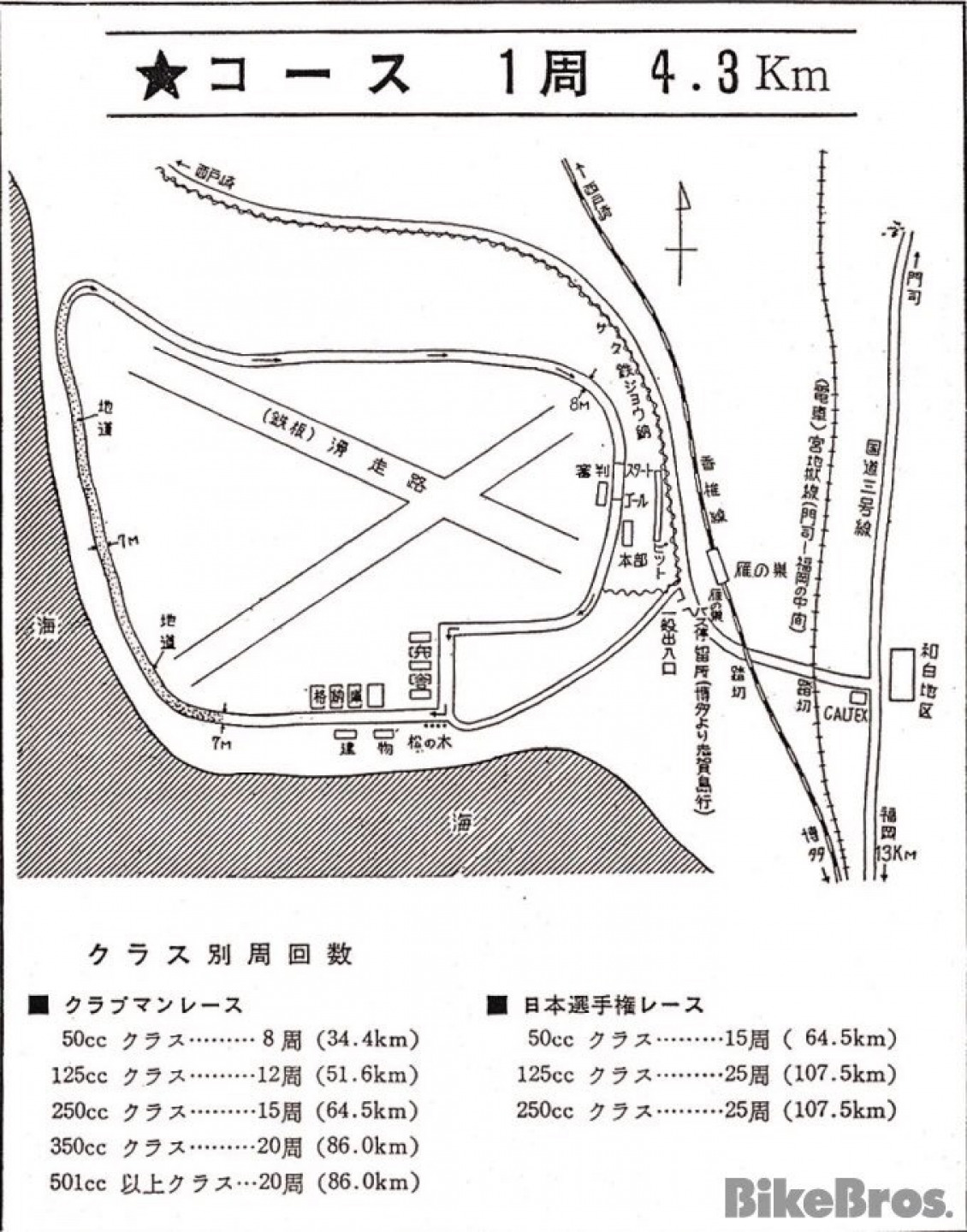
Facing Hakata Bay and surrounded by service roads, the U.S. airbase at Gannosu was an ideal location for motorcycle road racing. It offered a 4.3 km closed course, with about 3/4 of the track paved with asphalt. There were some unpaved sections, including seaside gravel stretch with jumps as well as a seaplane taxiway covered with Marston matting (pierced steel planking), but it was far better than the Asama race track which was ---- although considered then as the center of the Japanese motorcycle racing scene ---- covered with volcanic-ash. The blacktop airstrip was the reason why today Gannosu is referred to as the root of Japanese road racing.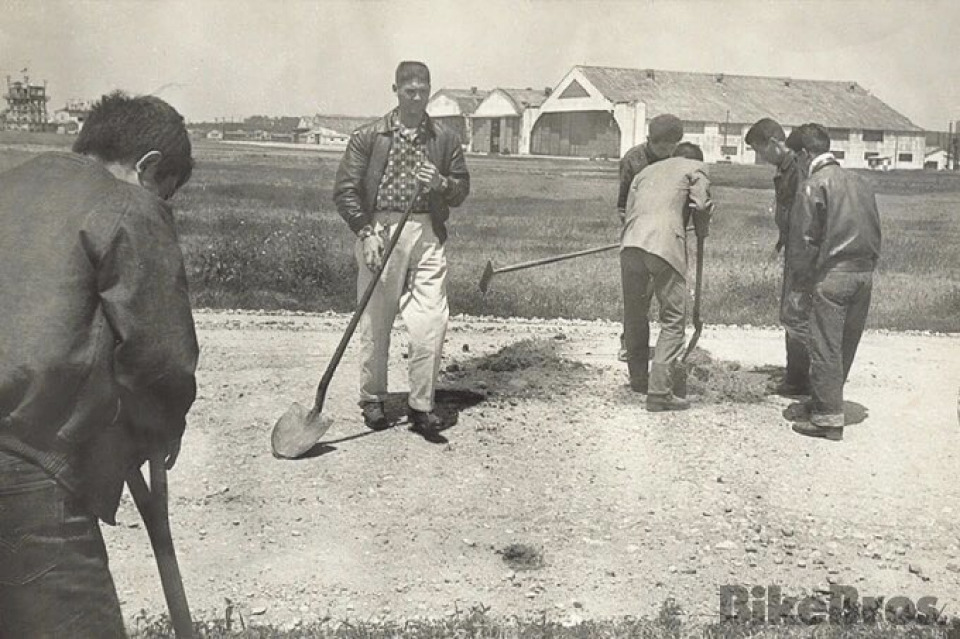
It was like a Kyushu version of On Any Sunday. KTA members including Hideo enjoyed spending every weekend racing at Gannosu, Itazuke and Ashiya. On the other side of the fence surrounding these air bases Japanese people found America. Hideo's kids were at first surprised, then increasingly fascinated, with all sorts of American cuisine from hot dogs to sandwiches, ice cream and Coca Cola. The gap between America and war-torn Japan was painfully obvious.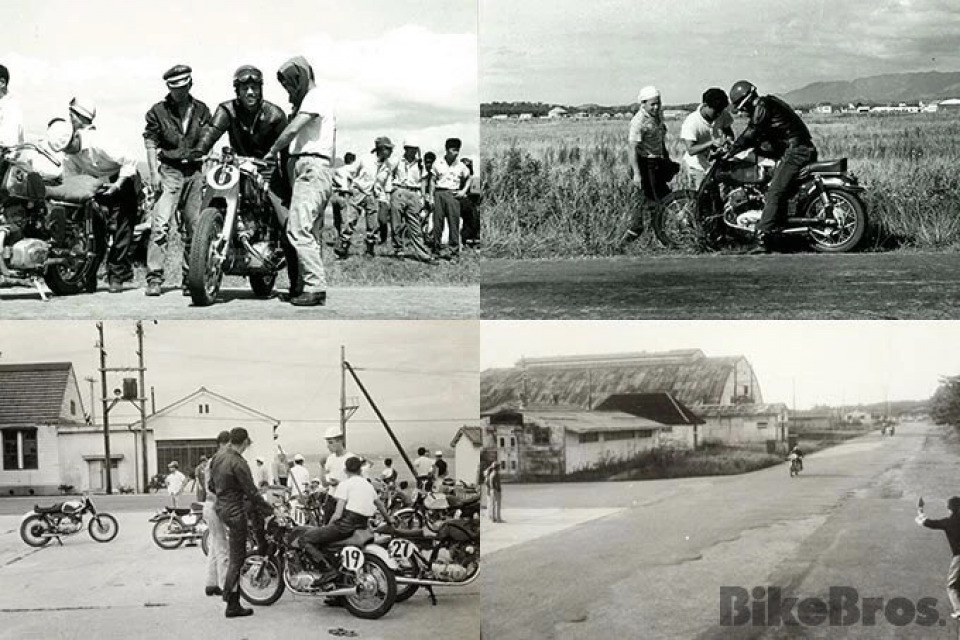
Still, there was a progress onwards. In November 1961, Honda launched the Dream Super Sports CB72 (sold as the Hawk in the U.S. market). This machine became a game-changer for Hideo, as well as in the Japanese motorcycle racing history, as it gave Japanese motorcyclists who could not afford imported bikes an opportunity to go beyond the fence of Gannosu.
Stories and photos supplied by Yoshimura Japan / Namiko Moriwaki / Road Rider Archives
Written by Tomoya Ishibashi
Edited by Bike Bros Magazines
 Follow
3.2K
Follow
3.2K

